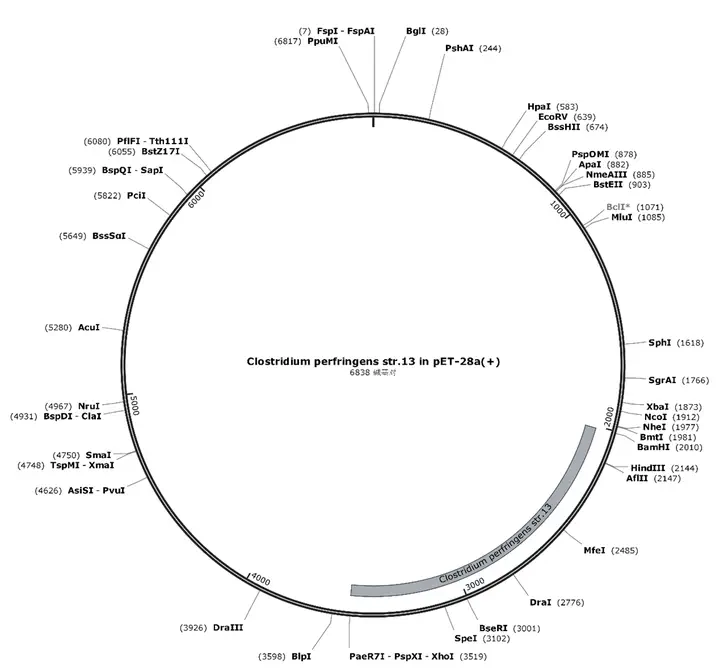Recombinant Expression of PFO Protein through Genetic Engineering
 Recombinant Expression Plasmid
Recombinant Expression Plasmid
Produced by Clostridium perfringens, the pore-forming toxin perfringolysin O(PFO) is one of the cholesterol-dependent cytolysins(CDCs) and able to interact with cholesterol in mammalian cell membrane surface to form a bilayer-spanning pore, it plays an important role in the occurrence of diseases development and is widely applied in all kinds of cell biology experiment as a kind of perforin. The expression, isolation and purification of PFO is the basis for studying or using its biological activity.
We inserted the gene fragment expressing the PFO protein into the pET-28a plasmid vector, and then transformed the vector into BL21 (DE3) bacteria. Subsequently, we induced expression and conducted isolation and purification under suitable conditions. The protein was concentrated to the desired concentration, and its biological activity was determined. The results showed that the target protein was successfully expressed in large quantities, achieving a certain level of purity and concentration through separation, purification, and concentration steps. Additionally, we explored a series of optimal experimental conditions for the expression of PFO, laying a solid foundation for the follow-up experiments.
Finally, we drawed a conclusion that the recombinant PFO can be induced to be expressed in large quantities in Escherichia coli and its expression can be greatly improved after experimental optimization. However, its activity in vitro remains to be further verified.